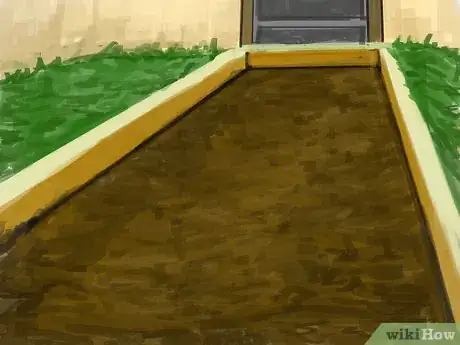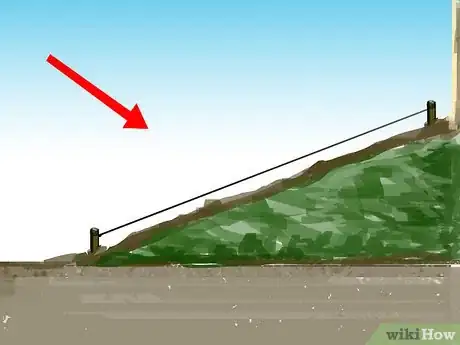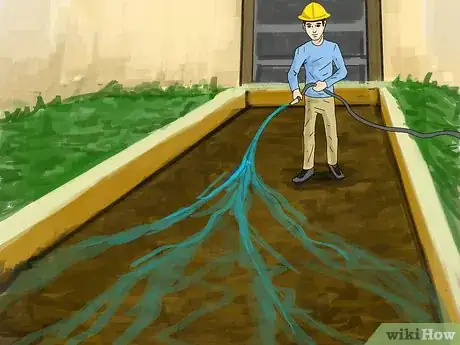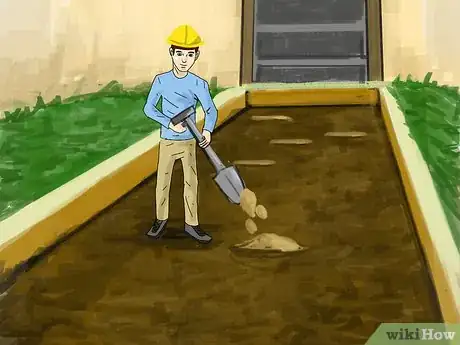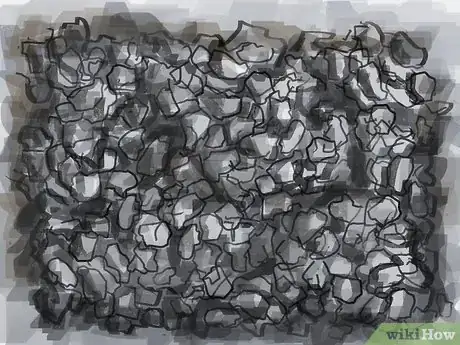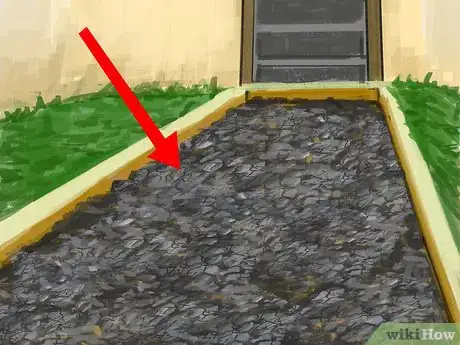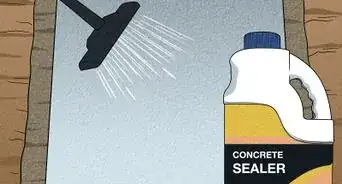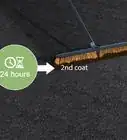This article was co-authored by Anthony "TC" Williams. Anthony "TC" Williams is a Professional Landscaper in Idaho. He is the President and Founder of Aqua Conservation Landscape & Irrigation, an Idaho Registered Landscape Business Entity. With over 21 years of landscaping experience, TC has worked on projects such as the Idaho Botanical Garden in Boise, Idaho. He is a Idaho Registered Contractor and a previously Licensed Irrigator in the State of Texas.
wikiHow marks an article as reader-approved once it receives enough positive feedback. In this case, 87% of readers who voted found the article helpful, earning it our reader-approved status.
This article has been viewed 414,454 times.
A driveway paved with asphalt can last as long as 15 years. Asphalt is durable, resilient and low-maintenance. The process of paving with asphalt is not difficult, but proper asphalt installation requires heavy equipment that most homeowners do not possess. You might not be able to install asphalt by yourself, but understanding the operation will allow you to ensure that your hired contractor is doing it correctly. Use these steps as an installation guide.
Steps
-
1Find a contractor. It's important to feel comfortable with the person you hire. Ask your friends and family for recommendations. You want a contractor who will do a thorough job and who has the best equipment. Have discussions with potential contractors before hiring them. Study the contract to confirm everything you wish to be done is spelled out in the document.[1]
- Be wary of anyone who claims that they have extra asphalt that they can put down for a discounted price. The asphalt will most likely be of poor quality and workmanship.
-
2Remove your current driveway surface. This might include breaking up existing concrete and removing the pieces or collecting loose gravel. The surface needs to be completely clean and clear before continuing. There should no grease or oil stains.Advertisement
-
3Grade your driveway slope.[2]
- In order to achieve proper drainage and prevent a collapsed or heaved driveway, the surface should be graded so that water runs off to the sides or bottom.
- Run a hose at the top of your driveway to determine where the water runs. Keep in mind that this sub-base must be completely dry before putting in new asphalt so that the asphalt will adhere fully when installed.
- Build mounds and fill in low spots to achieve the proper grade. An optimal slope is 1/4 inch per foot (0.635 cm per 30.48 cm).
-
4Compact the base soil. A 3,000-pound (1,361 kg) twin drum roller is the best machinery for compacting soil and other surfaces. You may be able to rent one from an equipment rental outlet. If your contractor does not use this type of equipment, it is important to make sure that the soil is properly compacted.
-
5Cover the base soil with crushed rock.
- The type of crushed rock used is crucial to proper drainage. The composition of the rock should be coarse and jagged. This type is usually called '3/4" minus' or 'Road-base' mix.
- If your underlying soil is clay-based, you will need 8 inches (20.32) of crushed rock.
- If your underlying soil is sandy, you will need 4 inches (10.16 cm) of crushed rock.
-
6Pack the crushed rock into the subsoil.
-
7Allow this base to settle for approximately 1 week. Many contractors will skip this step due to time. The benefit of allowing the base to settle is a stronger, more naturally settled base. If the base material is not allowed to settle properly, it will most likely fail from movement occurring under the new asphalt.[3]
-
8Choose an asphalt size and thickness.[4]
- The size of the aggregate used to create asphalt pavement ranges from 1/2 inch to 3/4 inch (1.27 cm to 1.9 cm).
- Smaller aggregate is usually used for residential driveways because it gives a smoother appearance. If the aggregate is larger, however, the pavement is stronger. The best layer thickness is 2 to 3 inches (5.08 to 7.62 cm).
-
9Compact the asphalt with a heavy roller.[5]
-
10
Community Q&A
-
QuestionWe had an asphalt driveway put in, and we ran out of product. We waited 45 minutes for more to come, and now it looks like it's been patched. Should we have them redone again?
 Community AnswerThis is normal and shouldn't be anything more than a shadow. If they did it properly and if it's truly recent, they can come back and heat the area up to make it blend properly.
Community AnswerThis is normal and shouldn't be anything more than a shadow. If they did it properly and if it's truly recent, they can come back and heat the area up to make it blend properly. -
QuestionWhat is the base compound for asphalt?
 Community AnswerAsphalt is made up of four products: a man-made sand that's a byproduct of crushed rock, natural sand, crushed rock, and hot oil. All is mixed and heated to approximately 300 degrees, which combines to create the asphalt.
Community AnswerAsphalt is made up of four products: a man-made sand that's a byproduct of crushed rock, natural sand, crushed rock, and hot oil. All is mixed and heated to approximately 300 degrees, which combines to create the asphalt. -
QuestionHow do I prepare the surface for an asphalt walkway?
 Community AnswerThe surface has to be cleaned by air compressors, and all debris and any loose or obstructive material removed thoroughly. After cleaning the surface, a prime bitumen coat has to be applied in accordance with engineering specifications.
Community AnswerThe surface has to be cleaned by air compressors, and all debris and any loose or obstructive material removed thoroughly. After cleaning the surface, a prime bitumen coat has to be applied in accordance with engineering specifications.
Warnings
- If your subsoil is inferior, new soil will need to be installed and compacted properly before the asphalt paving can continue.⧼thumbs_response⧽
References
- ↑ https://www.thisoldhouse.com/ideas/top-8-pro-tips-how-to-hire-contractor
- ↑ https://www.todayshomeowner.com/video/how-to-install-an-asphalt-driveway/
- ↑ https://www.familyhandyman.com/masonry/how-to-install-a-durable-asphalt-driveway/
- ↑ https://www.familyhandyman.com/masonry/how-to-install-a-durable-asphalt-driveway/
- ↑ https://www.todayshomeowner.com/video/how-to-install-an-asphalt-driveway/

